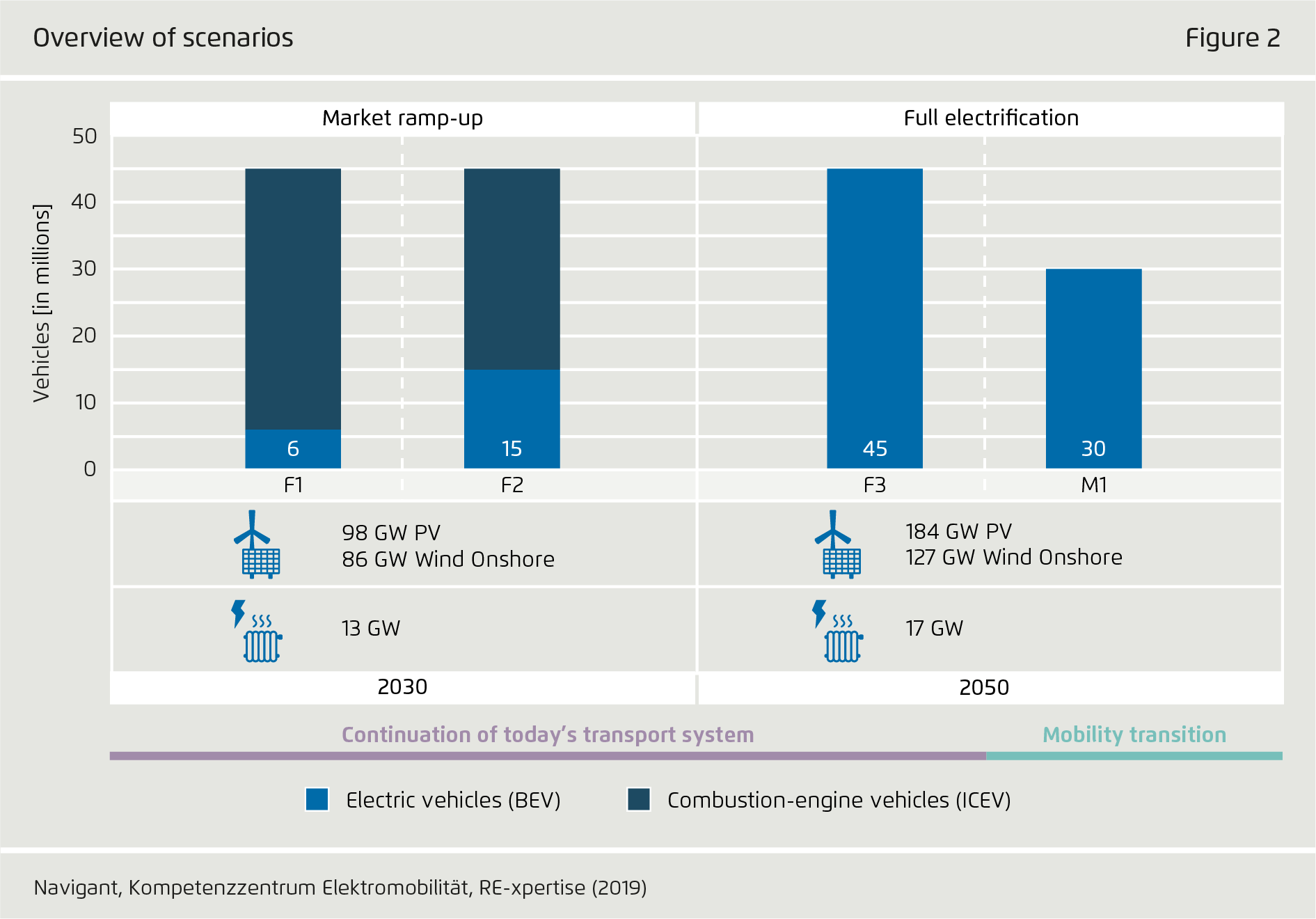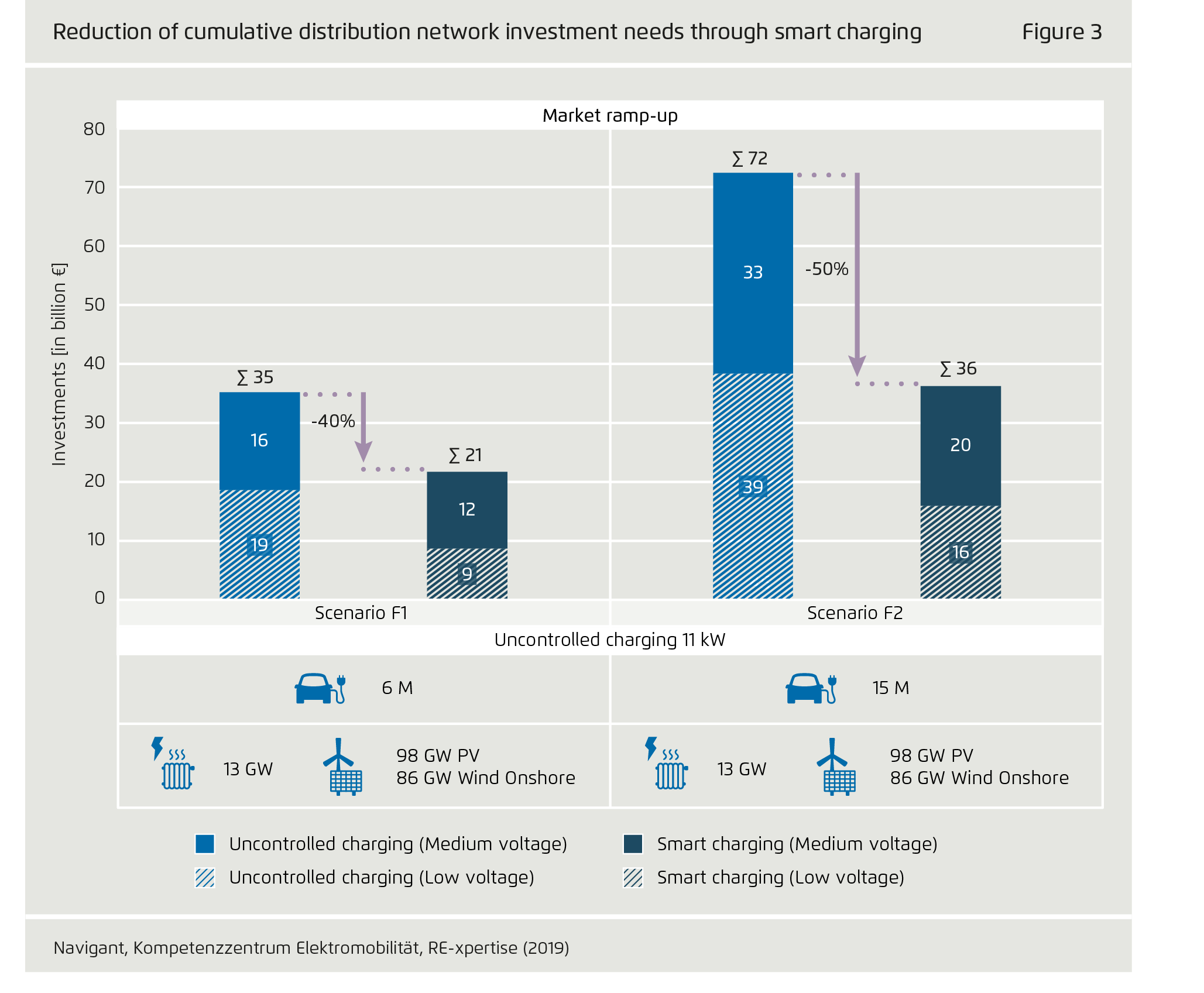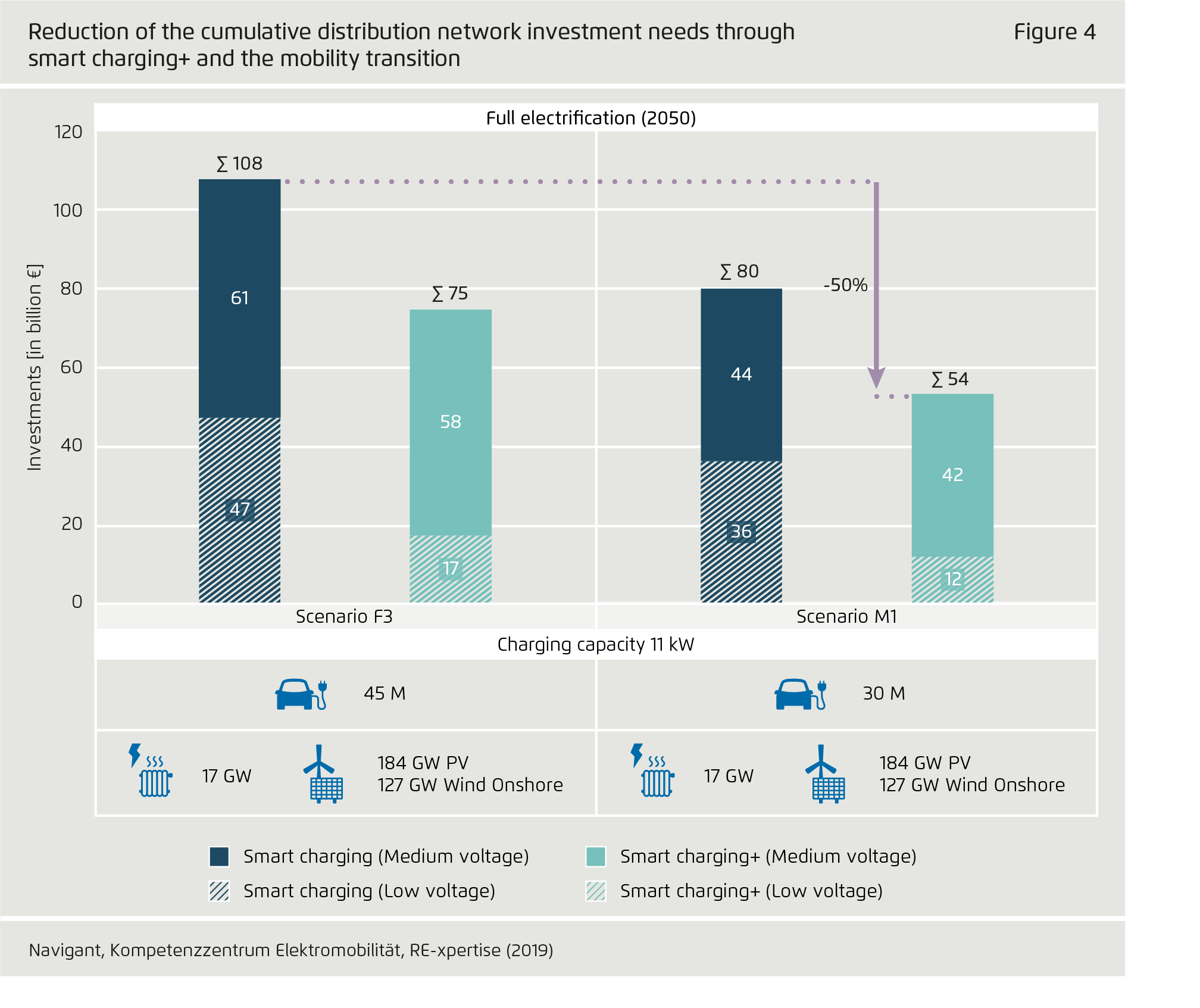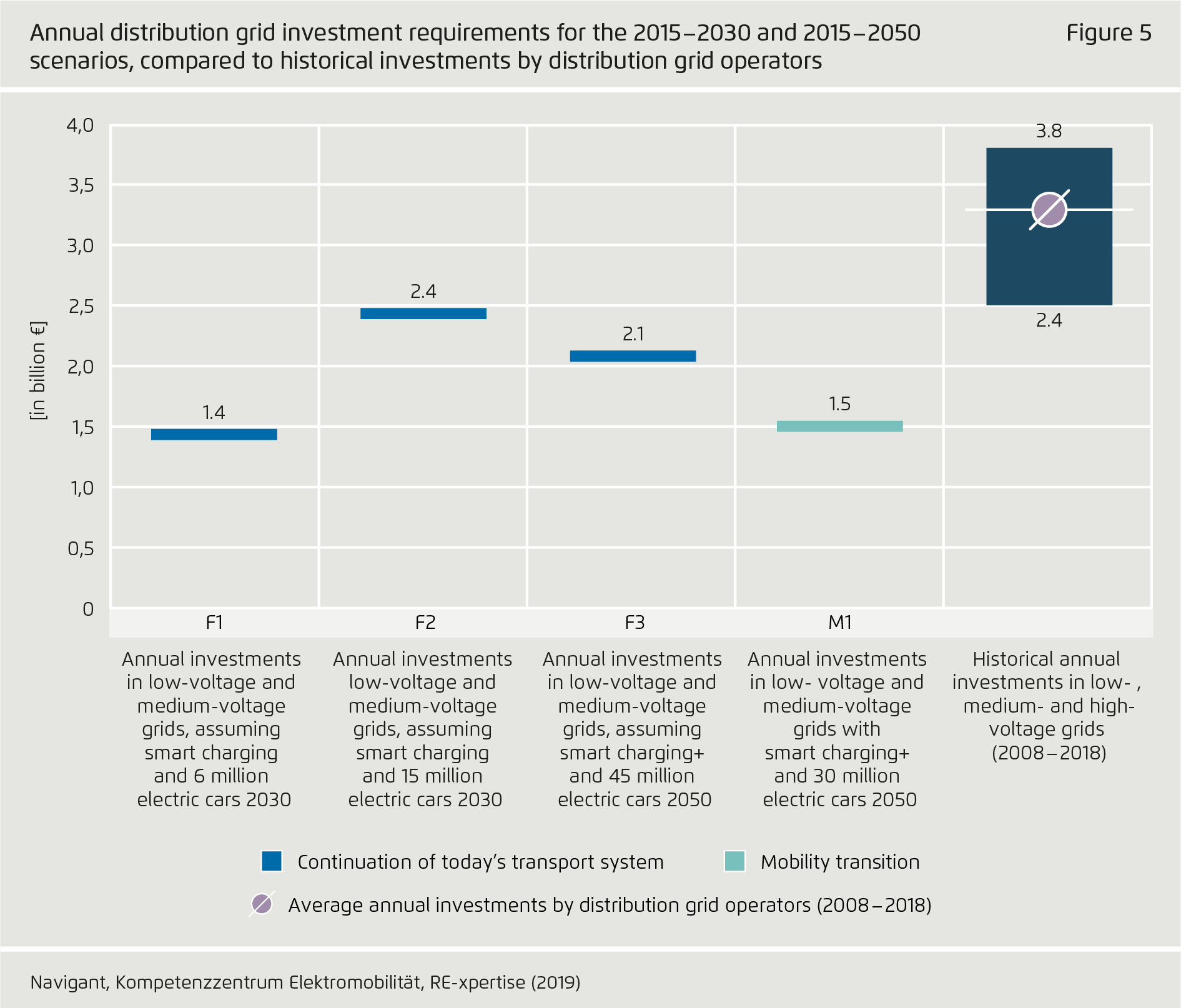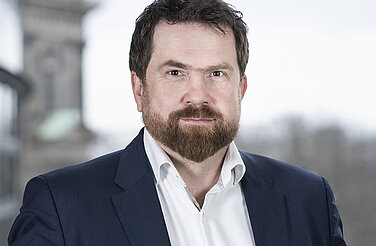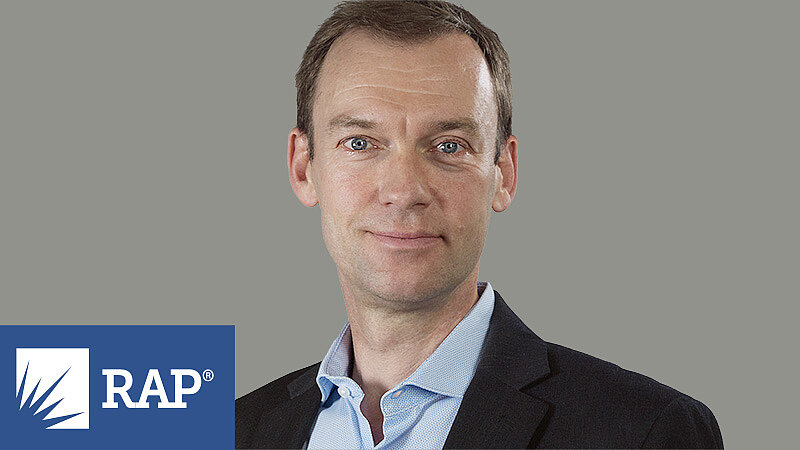-
The energy transition in the power distribution grids can be successful, even if all passenger vehicles are electrified.
Grid-friendly charging reduces the peak loads created when vehicles and electric heat pumps are charged simultaneously. It can also shift electricity consumption to times with abundant generation from solar photovoltaics and wind turbines.
-
Combining grid-friendly charging with the broader mobility transition can fund the energy transition in the electricity distribution grids by 2050, supplying 1.5 billion euros of annual investments in power lines and transformers.
Without the mobility transition, annual investments of 2.1 billion euros would be needed to accommodate 45 million, instead of 30 million, electric cars.
-
Electromobility can finance the expansion of the distribution network until 2050.
Electric mobility increases electricity sales, while the overall investment needed for power lines and transformers does not increase. However, it is important that the participants in the mobility transition pay their fair share of grid fees.
-
Smart charging can be designed to ensure that users hardly notice any restrictions.
To achieve this, grid-friendly managed charging must become the standard. We need secure information and communications technologies, incentives and, if necessary, obligatory managed charging. Precautionary indirect control, in the form of incentives for grid-friendly charging, should take precedence over direct control by the distribution grid operator.
This content is also available in: German
Distribution grid planning for a successful energy transition – focus on electromobility
Conclusions of a study commissioned by Agora Verkehrswende, Agora Energiewende and Regulatory Assistance Project (RAP)
Preface
In this paper, Agora Verkehrswende, Agora Energiewende and Regulatory Assistance Project (RAP) summarise the conclusions from a jointly commissioned analysis of distribution grid planning for the energy transition, with a focus on electromobility (full study only available in German, download here), and offer wider considerations on the topic. The research was undertaken by contractors Navigant, Kompetenzzentrum Elektromobilität and RE‑xpertise. The key findings from the study are summarised in Figure 1 below. The energy transition is facing two major challenges with regard to power distribution: First, power peaks occur when high levels of solar and wind are fed into the grid on days with favourable weather conditions. Secondly, heat pumps and electrified transport cause increases in peak loads with high coincidence factors and power draw. As a result, the peak network capacity needed to meet demand increases. Viewed through the lens of conventional grid planning, these three drivers - feed-in from renewable energy sources, and the additional demand from heat pumps and from electric vehicles – would indicate that the electricity distribution grid needs to be expanded.
However, so-called “smart charging” of electric vehicles can help to reduce peak loads on the networks and, in turn, delay or obviate the need for network expansion. Therefore, charging processes should be shifted to times that benefit the grid, i.e., ensuring higher utilisation of network capacity.
It is not possible to determine which cost driver requires how much network expansion, because the three drivers (additional renewables, electrified heating and e-mobility) are intertwined. Although electrification of transport was the focus of the research project, all of the findings about investment requirements apply to all three drivers.
In addition to the potential of managed electric vehicle charging, the study examines the effects of the mobility transition on network expansion requirements. By mobility transition, we mean the broader shift toward public and shared mobility and away from private-car-based transport.
Accordingly, the study included a scenario assuming that passenger kilometres travelled remain the same, while public transport, shared mobility, cycling and walking increase and private car travel decreases.
The research project addressed the following questions:
- What investments in power lines and transformers on low-voltage and medium-voltage networks are needed to further the energy transition in the areas of electricity, heat and transport?
- To what extent does grid-friendly charging of electric vehicles reduce the need for network expansion and the associated investments?
- What effects does the mobility transition have on increasing public transport, cycling, walking and shared mobility options?
- What regulatory framework is needed for charging electric vehicles?
The researchers first established scenarios for development of the three drivers of network expansion for the years 2030 and 2050. They then developed a model based on these assumptions that calculated the effects of the power, heat and transport sector transitions on the different scenarios. The resulting recommendations for smart charging aim to determine how the potential for reducing investment requirements can be translated from theory into practice.
Key findings
Bibliographical data
Downloads
-
pdf 2 MB
Distribution grid planning for a successful energy transition – focus on electromobility
Conclusions of a study commissioned by Agora Verkehrswende, Agora Energiewende and Regulatory Assistance Project (RAP)
All figures in this publication
Reduktion des kumulativen Verteilnetz-Investitionsbedarfs durch gesteuertes Laden
Figure 2 from Distribution grid planning for a successful energy transition – focus on electromobility on page 11
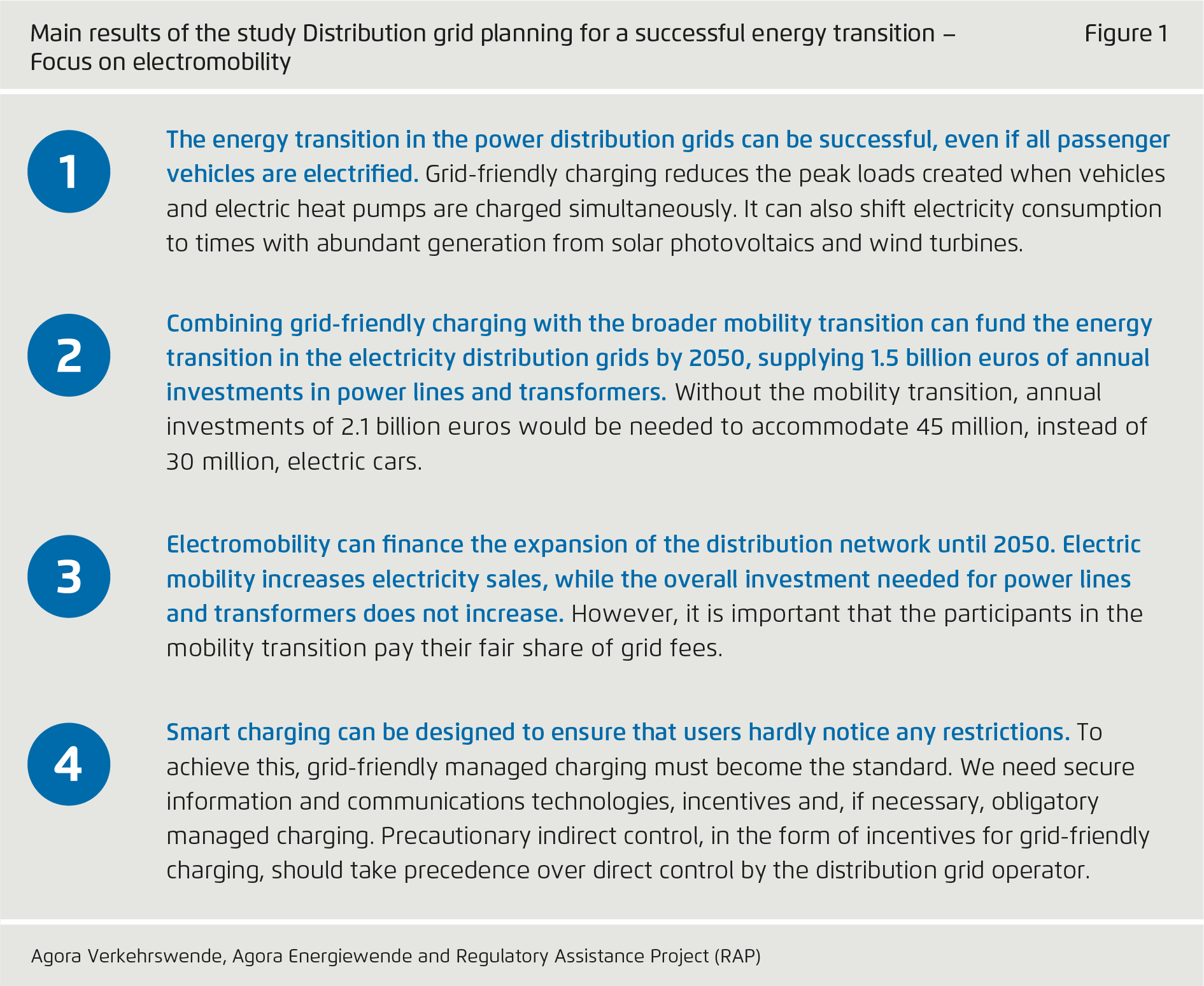
Overview of scenarios
Figure 2 from Distribution grid planning for a successful energy transition – focus on electromobility on page 4
